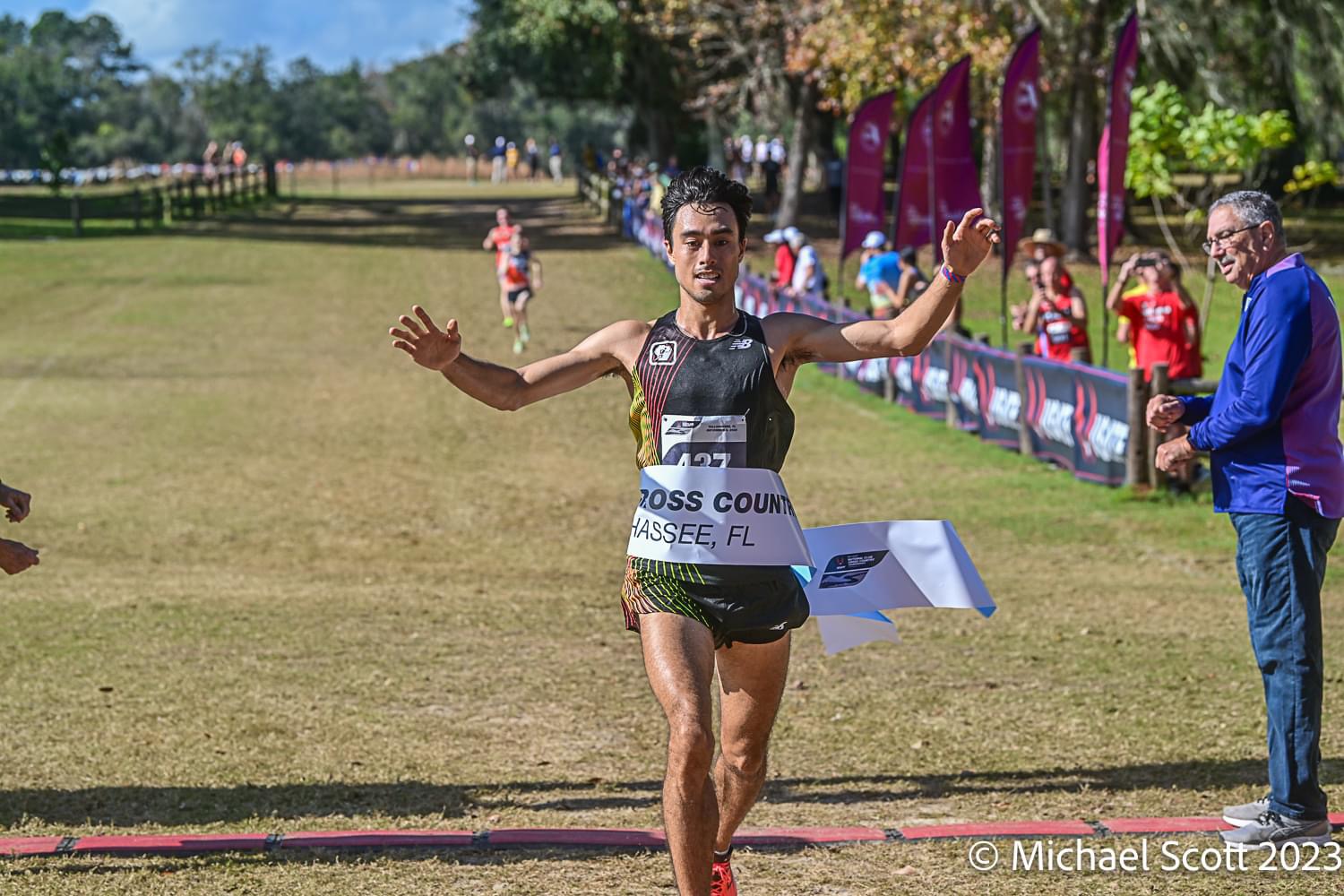The usual plan for the George Washington Parkway Classic calls for securing a 10-mile, point-to-point course that starts at Mount Vernon, proceeds along George Washington Memorial Parkway, and finishes in Alexandria – a short walk away from Oronoco Bay Park. This means, on one hand, that some sort of barrier must stand between every driver and every possible opportunity to unknowingly or knowingly enter the race course. On the other, it means that course marshals and police officers must be ready to stand by and enforce these barriers; and, should the unthinkable happen – a vehicle on the course – the plan includes being ready for that, too.
There is the job of safely transporting 6,000-or-so runners from an area near the finish – where many park – to the start. There is the readiness for any on-course injuries. There are risk management strategies. And yes, there is water, and sports drinks, and gel packs, and clocks at mile markers.
That’s not it – not even close. But two more things: The Alexandria Police Department, for this year’s race, wanted to honor a colleague who was seriously injured in a shooting, and, on a related note, make the last mile special for participants.
Twenty-five year force member Sgt. Joseph Seskey and the members of his special events unit envisioned – with about a mile to go – a line of police officers there to greet the runners, many of whom wore honorary bibs for Officer Peter Laboy, the man injured, on their backs. “So you turn that corner,” Seskey said, “and it kind of grabs you: everyone coming together to support Peter.”
Six days before the Parkway Classic, tragedy struck the Boston Marathon.
An hour later, Seskey was on the phone with Kathy Dalby, founder of Pacers Events, which organizes the race.
The officers scheduled to stand strong for Peter Laboy were reassigned to other race day duties. Contingency planning for “enhanced security,” years in the making, quickly took shape.
“We knew we had to make some changes,” Seskey said, “and be out in front. Within an hour from Boston … everybody was thinking alike. We all just knew what we needed to do.”
In addition to Alexandria police and Pacers Events, “everyone” included U.S. National Park Police, whose jurisdiction covers better than three quarters of the course, fire and rescue units, and additional local and federal agencies whose services were suddenly in high demand.
Sanitation was called in to cover trash cans. Emergency management, intelligence, and special operations performed unseen jobs. The finish area was closed off to spectators, a mobile command center situated nearby.
Staffing was increased for specific locations, Seskey said. Extra bomb-sniffing dogs were present. Snipers manned rooftops, while extra police teams observed the crowd.
“We have always understood that any place that a lot of people assemble could be a possible target,” said Seskey, whose team is handling safety and threat assessments plans for an ever-increasing number of road races. “You just have to always be prepared. We kind of operate on that level without even knowing it, just because we have been doing it for so long.”
The Game Changer
What if there is a huge thunderstorm, or a gas leak, or an attack? How would you re-route or cancel the race? What’s the evacuation plan?
When police, fire departments, emergency services, and race organizers meet at the planning table months before an event, all these scenarios are on the table, Dalby said.
Twenty years ago, Marine Corps Marathon Race Director Rick Nealis remembers one thing that weighed heavily on many race directors’ minds was whether to put four or six ounces in the Dixie cups Marines would hold out for runners.
September 11 was a “game changer,” he said, explaining the increasing emphasis placed on safety and security rather than water, Vaseline, and bananas.
As if September 11 wasn’t enough, the D.C. sniper shooting occurred the follow October. The next year, America entered a second war, making MCM a potentially more inviting target, Nealis said.
There was a time when MCM runners could park in the Pentagon parking lot, a time when race day logistics didn’t include security checkpoints. There was also a time when the race didn’t sell out in less than three hours.
While you run MCM – through seven police jurisdictions – emergency crews are on standby, security alerts are taken and processed, police officers stand guard over barricades.
Some situations require quick decisions. During last year’s MCM 10K, which is held during the marathon, debris left over from the Army Ten-Miler, Nealis said, blew onto the course and looked like a suspicious package. The race was stopped until authorities could inspect it.
Afterward, while you analyze every last detail about your performance, so do organizers and their security partners.
“Each year,” Nealis said, “you sit back and you say, well, we could do this better.”
Enhanced Security
Jean Arthur remembers how quickly one driver’s irritation turned to rage.
She was standing beyond the sidelines of a local road race, a volunteer course marshal. The road was closed for the race, Arthur explained to the driver. The only option was to turn around.
The driver started yelling. A police officer, who heard the yelling, approached the car, and suddenly the driver seemed to have no problem at all.
Arthur is now the race director for the Pikes Peek 10k, a point- to-point, super-fast race, held this year on the same day as the Parkway Classic.
She took over the job in 2007. By now, she knows all of the police officers she works with on a first name basis.
For Pikes Peek she works with several police departments and two fire departments.
The traffic control plan is 50 pages long. And in the early morning, as a race truck heads out on the course to lay down cones, a police car follows with flashing lights.
Going back to her experience, Arthur has learned that police bring more than manpower to an event, but also a sense of legitimacy. Drivers encountering a truck going really slow on Route 355 in the early morning sometimes become annoyed, and having a police officer at her side provides “general protection.”
After she heard about the attack in Boston, Arthur contacted her event partners right away.
“Hey, Jean,” one police officer wrote her in a text message. “I got you covered. We’ll take care of you.”
Bomb sniffing dogs were at the start and finish of this year’s race, sniffing vehicles, bags, and portable toilets. An extra police officer roamed the course on a motorcycle.
Police officers at Pikes Peek, once on-course assignments are complete, typically report to their next assignment, but this year all of them provided extra security at the post-race festival.
“I think from here on out we have to take these extra precautions,” Arthur said.
Even so, how much will really change?
When you run a race in the District starting in front of Freedom Plaza, you probably aren’t thinking – are you even aware? – of the hundreds of cameras watching you, of “mass casualty” pre-planning, or reports of a suspicious car near the course.
Enhanced security, much like regular security, is both seen and unseen. So as race organizers and police officers, post-Boston, re-evaluate these plans, now is a good time to recognize how much safety and security infrastructure is already in place. This is the time to recognize all the planning that goes into closing roads so we can race in the middle of them, and the already essential role of police and fire crews and medical staff and emergency response units in allowing us to celebrate our sport.
The Parkway Classic was U.S Park Police Sgt. Ari Wong’s first race as head of the force’s special events unit.
“Coming into this job,” Wong said, “you really don’t have as much appreciation for what goes into it.”
For big races like the Parkway Classic, the planning begins many months in advance. Thus, by race day, every assigned officer’s task should be clear. “I do my job well,” Wong said, “if I don’t have very much to do on race day.”
Given the sheer volume of road races in the area, the job, Wong said, comes with its fair share of super-early weekend mornings.
But Wong, and Seskey both said they enjoy the work, and working with each other, on races that cover both police forces’ jurisdictions.
“There’s no lead agency,” Wong said. “We work together from day one.”
He added: “For all of us in law enforcement, the people running are our neighbors, our friends, our colleagues’ husbands and wives. We want it to be a special event for them. We want it to be safe.
Recent Stories
Looking for our race calendar? Click here Submit races here or shop local for running gear
James W. Foley Freedom Run
Inspired by the moral courage of freelance journalist James Foley, the mission of the nonprofit Foley Foundation is to secure the freedom of Americans held captive abroad unjustly by terrorist organizations or rogue states, and to promote journalist safety.
The
Kensington 8K Race
Since 1994, the Kensington 8K Race has been a favorite DC area fall race – a fun, fast event with beauty, challenge, and excitement. Run it this year on Saturday, September 21, 2024!
The 8K distance is $39, with a







